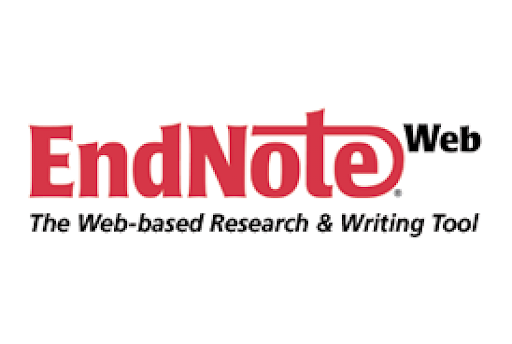Strategic Management in Industry 4.0: Digital Transformation in NIKE Inc. Using the Dynamic Capability Approach
Abstract
Today we are in the industrial ecosystem 4.0, which is characterized by various uses of technology such as the Cloud Computerization, the Internet of Things (IoT), Artificial Intelligence (AI) and Big Data which they are part of what is called digital transformation. At this time the company is required to be able to adapt to industry 4.0, especially with digital transformation, in order to the company can survive and still be able to competing with other companies. The research method used in this article is a descriptive research method by using secondary data sources, where secondary data comes from literature studies conducted from the results of searching various articles on the internet. This article discusses how NIKE Inc. carry out digital transformation through dynamic capabilities which consist of sensing, seizing, and transforming processes.
Keywords: Industry 4.0, Digital Transformation, Dynamic Capability
References
M. B. Miles, A. M. Huberman, and J. Saldaña, Qualitative data analysis: A methods sourcebook. Sage publications, 2018.
K. S. Warner and M. Wäger, ‘Building dynamic capabilities for digital transformation: An ongoing process of strategic renewal’, Long range planning, vol. 52, no. 3, pp. 326–349, 2019.
Y. Yoo, R. J. Boland Jr, K. Lyytinen, and A. Majchrzak, ‘Organizing for innovation in the digitized world’, Organization science, vol. 23, no. 5, pp. 1398–1408, 2012.
A. Bharadwaj, O. A. El Sawy, P. A. Pavlou, and N. v Venkatraman, ‘Digital business strategy: toward a next generation of insights’, MIS quarterly, pp. 471–482, 2013.
D. Newman, ‘Top 5 Digital Transformation Trends in Manufacturing Forbes’, no. August, 2017.
S. Wang, J. Wan, D. Li, and C. Zhang, ‘Implementing smart factory of industrie 4.0: an outlook’, International journal of distributed sensor networks, vol. 12, no. 1, p. 3159805, 2016.
K. M. Eisenhardt and J. A. Martin, ‘Dynamic capabilities: what are they?’, Strategic management journal, vol. 21, no. 10–11, pp. 1105–1121, 2000.
D. J. Teece, G. Pisano, and A. Shuen, ‘Dynamic capabilities and strategic management’, Strategic management journal, vol. 18, no. 7, pp. 509–533, 1997.
D. J. Teece, ‘Dynamic capabilities: Routines versus entrepreneurial action’, Journal of management studies, vol. 49, no. 8, pp. 1395–1401, 2012.
A. Ustundag and E. Cevikcan, Industry 4.0: managing the digital transformation. Springer, 2017.
H. S. Kang et al., ‘Smart manufacturing: Past research, present findings, and future directions’, International journal of precision engineering and manufacturing-green technology, vol. 3, no. 1, pp. 111–128, 2016.
C. Öberg and G. Graham, ‘How smart cities will change supply chain management: a technical viewpoint’, Production Planning & Control, vol. 27, no. 6, pp. 529–538, 2016.
W. Schroeder, ‘Germany’s Industry 4.0 strategy’, London: Friedrich Ebert Stiftung, 2016.
D. Kiel, C. Arnold, and K.-I. Voigt, ‘The influence of the Industrial Internet of Things on business models of established manufacturing companies–A business level perspective’, Technovation, vol. 68, pp. 4–19, 2017.
H. Kagermann, J. Helbig, A. Hellinger, and W. Wahlster, Recommendations for implementing the strategic initiative INDUSTRIE 4.0: Securing the future of German manufacturing industry; final report of the Industrie 4.0 Working Group. Forschungsunion, 2013.
J. W. Strandhagen, E. Alfnes, J. O. Strandhagen, and N. Swahn, ‘Importance of production environments when applying Industry 4.0 to production Logistics-A multiple case study’, in 6th International Workshop of Advanced Manufacturing and Automation, 2016, pp. 241–247.
A. Schallmo and R. Daniel, Digital Transformation Now! Guiding the Successful Digitalization of YourBusiness Model. Springer, 2018.
S. J. Berman, ‘Digital transformation: opportunities to create new business models’, Strategy & Leadership, 2012.
D.-Y. Liu, S.-W. Chen, and T.-C. Chou, ‘Resource fit in digital transformation: Lessons learned from the CBC Bank global e-banking project’, Management Decision, 2011.
D. R. Brousell, J. R. Moad, and P. Tate, ‘The next industrial revolution: how the internet of things and embedded, connected, intelligent devices will transform manufacturing’, Frost & Sullivan, A Manufacturing Leadership White Paper, 2014.
R. F. Babiceanu and R. Seker, ‘Big Data and virtualization for manufacturing cyber-physical systems: A survey of the current status and future outlook’, Computers in industry, vol. 81, pp. 128–137, 2016.
S. Makridakis, ‘The forthcoming Artificial Intelligence (AI) revolution: Its impact on society and firms’, Futures, vol. 90, pp. 46–60, 2017.
C. M. C. de Mendonça and A. M. V. de Andrade, ‘Dynamic capabilities and their relations with elements of digital transformation in Portugal’, Journal of Information Systems Engineering & Management, vol. 3, no. 3, 2018.
E. Brynjolfsson and A. McAfee, The second machine age: Work, progress, and prosperity in a time of brilliant technologies. WW Norton & Company, 2014.
A. Kaplanidou, ‘Digitalization in the apparel manufacturing process’, Master’s Thesis, 2018.
D. J. Teece, ‘The foundations of enterprise performance: Dynamic and ordinary capabilities in an (economic) theory of firms’, Academy of management perspectives, vol. 28, no. 4, pp. 328–352, 2014.
C. A. O’Reilly III and M. L. Tushman, ‘Ambidexterity as a dynamic capability: Resolving the innovator’s dilemma’, Research in organizational behavior, vol. 28, pp. 185–206, 2008.
H. Endres, Adaptability Through Dynamic CapabilitiesHow Management Can Recognize Opportunities and Threats. Springer, 2018.
M. Ahmad, M. Papert, and A. Pflaum, ‘Dynamic capabilities related implementation skills for internet of things solutions in the digital economy’, 2018.
D. J. Teece, ‘Explicating dynamic capabilities: the nature and microfoundations of (sustainable) enterprise performance’, Strategic management journal, vol. 28, no. 13, pp. 1319–1350, 2007.
C. Åberg, N. Kazemargi, and M. Bankewitz, ‘Strategists on the board in a digital era’, Business and Management Research, vol. 6, no. 2, pp. 40–51, 2017.
G. V. Hulme, ‘Digital Transformation Helps Drive Nike’s Earning Run’, 2019.
I. Nica, N. Chiriță, and Ștefan Ionescu, ‘Using of KPIs and Dashboard in the analysis of Nike company’s performance management.’, Theoretical & Applied Economics, vol. 28, no. 1, 2021.
R. W. Palmatier and L. Steinhoff, Relationship marketing in the digital age. Routledge, 2019.
Nike, ‘Nike Acquires Invertex’. https://news.nike.com/news/nike-invertex-digital- technology (accessed Sep. 14, 2019).












 This work is licensed under a Creative Commons Attribution-ShareAlike 4.0
This work is licensed under a Creative Commons Attribution-ShareAlike 4.0